Matador Network's Blog, page 1166
February 7, 2019
Disneyland Paris hosting first Pride

Disneyland Paris will be kicking off Pride Month 2019 with a special event. “Magical Pride,” the first-ever Disney Pride event, will be celebrated in the Walt Disney Studios Park, which will be privatized for the Pride party from 8:00 PM to 2:00 AM on June 1, 2019. The event will include the Magical March of Diversity Parade, access to selected attractions, Disney character meet and greets, DJs and special live music performances for an epic dance party, karaoke theatre experiences, and themed photo locations.
According to the official website, Disney wants guests who show up on June 1 to “dress like a dream, feel fabulous and experience the Walt Disney Studios Park like never before — loud, proud, and alive with all the colors of the rainbow.”
Magical Pride is the latest of Disney’s efforts to encourage acceptance and inclusivity. When Disney began hosting same-sex weddings back in 2007, Donn Walker, spokesperson for Disney Parks and Resorts, told CBS News, “We want everyone who comes to celebrate a special occasion at Disney to feel welcome and respected.” While Disney has made several gestures to the LGBTQ community in the past, including the debut of a Rainbow Mickey Collection in 2018, this will be the first official Pride event held at any of its parks.
“Diversity and equality are strong values at Disneyland Paris,” a spokesperson for Walt Disney told NBC News, “and each year, we host millions of visitors regardless of their origins, gender, or sexual orientation. We are committed to fostering a welcoming environment for all of our guests where magic is for everyone.”
Disneyland will be partnering with the Daddy and Dad blog and The West Wing for this event. Tickets for Magical Pride start at $101 per person, and can be reserved online. 
H/T: Bustle

More like this: Disney’s new $12,000 VIP experience takes you inside Cinderella’s Castle
The post Disney is hosting its first-ever official Pride event and it will be magical and fabulous appeared first on Matador Network.

Get paid to review luxury products

If you have a taste for the finer things in life but can’t exactly afford them, this job offer will feel like a dream come true. Hush Hush, a luxury shopping marketplace, is looking for a product tester to try out a variety of luxury goods, brands, and services, and provide detailed reviews.
If selected, you will be testing (read: enjoying to the max) luxury items, and tasked with reviewing them for their style, comfort, performance, and suitability for the website. You will have to produce a report on each item before it’s listed for sale, but that’s a pretty small responsibility given the job’s extensive benefits.
The tester can expect to review aircrafts, yachts, fashion, art, jewelry, properties, and the like. Specifically, you might be testing, and writing about, an $80 million French chateau, a $71 million jewel-encrusted watch, a $61 million superyacht, or a $23 million jet.
Since you’ll be reviewing private islands and other properties around the world, you must be willing to travel extensively. In addition, you will also be paid a salary of $97,000 per year — not too shabby.
To apply, visit the company’s website and fill out the form. It requires you to submit your resume and asks for an “introduction/overview” which is your opportunity to describe why you would be the best choice for the role.
If you’re lucky enough to win the job and find yourself sailing around the world in a superyacht, remember a certain Matador Network writer who definitely won’t say no to a free voyage. 
H/T: Travel & Leisure

More like this: The most outrageous luxury spa experiences in Africa
The post Get paid $97,000 to test luxury yachts and private islands appeared first on Matador Network.

LGBTQ landmarks
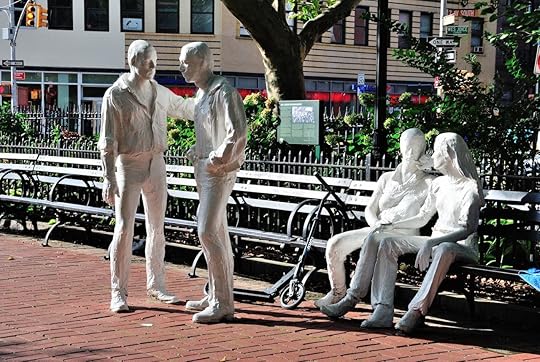
From the very first queer magazine to significant protests for LGBTQ freedom of expression, there are a number of buildings around the United States that are still standing as testaments to the history of the LGBTQIA+ community. Though it seems now like a world so far out of our grasp, there was once a time when members of the queer community could not even assemble for a few beers in peace. In fact, in a not-so-distant past, “social justice” did not appear to be in the realm of possibility for LGBTQ people.
Fast forward to decades later, and, though there is still much work to be done, LGBTQ trailblazers like Harvey Milk and Pauli Murray made a case for gay rights — and inevitably won. To honor these people, organizations, and protests that ultimately brought the issues of the LGBTQ community to the forefront, many buildings significant to the community’s history have been made into national landmarks. So if you’ve only ever heard of the Stonewall Inn, brush up on your history and add these 15 important LGBTQ landmarks to your pride bucket list.
1. The Black Cat Tavern — Los Angeles, California

Photo: The Black Cat Los Angeles/Facebook
First established in 1966, the Black Cat Tavern was a popular gay bar in Los Angeles known for being one of the first places to house the riots protesting police harassment of LGBTQ people — taking place two years before the famed Stonewall riots. These riots were the direct result of when Los Angeles police force raided the bar on New Year’s Eve, beating a large portion of the crowd with any objects that they could find. At the end of the night, they had beat two bartenders unconscious and arrested two men and had them registered as sex offenders — for simply kissing as the ball dropped at midnight.
On February 11, 1967, a little over a month after the incident, riots were organized by a group called PRIDE (later becoming the popular LGBTQ publication, the Advocate). This event is credited with bringing further awareness to police hostility toward the gay population. On November 7, 2008, the site was declared a Los Angeles Historic-Cultural Monument. Now, guests can visit the present-day Black Cat restaurant, which pays homage to the original bar with photographs lining the walls.
2. Castro Camera — San Francisco, California
If you know anything about LGBTQ culture, it’s likely that you’ve at least heard of Harvey Milk, the first openly gay elected official in California. From 1972 and until his assassination in 1977, Milk owned Castro Camera — a camera store in the Castro District of San Francisco. This location ultimately became the center of the neighborhood’s growing gay community and the campaign headquarters for his various runs for office. Decades later, the store has been converted into the Human Rights Campaign Action Center and Store, with a plaque in front of the store memorializing Milk.
3. Henry Gerber House — Chicago, Illinois
Listed as a US National Historic Landmark, this home in Chicago was originally the home of Henry Gerber, the founder of the Society for Human Rights — the first American organization working for gay rights. In the early 1920s, the Old Town section of Chicago, where Gerber lived, had become incredibly bohemian and accepting toward any LGBTQ lifestyles. Originally from intolerant Germany, Gerber found solace in this area, and in 1924, decided to create his own organization to protect the rights of the LGBTQ community surrounding him. Not only that, but that same year, along with other members of the organization, the first gay periodical in US history called Friendship and Freedom was created.
Though the society ended only a year later due to police raids and intense scrutiny, this first gay rights organization is now considered an incredibly important part of history. For guests curious about the humble beginnings of LGBTQ societies in the US, they only can visit the outside of the building, as it is now privately owned.
4. Julius Bar — Manhattan, New York

Photo: Julius, Bar/Facebook
Known as New York City’s oldest continuously operating gay bar, Julius was opened in 1840 and began attracting gay patrons in the 1950s — although the management staff refused to acknowledge their presence. On April 21, 1966, the bar became the backdrop to a historical event called the “Sip-In,” in which the Mattachine Society, one of the first LGBTQ groups, challenged the practice of bars not allowing LGBTQ patrons to drink on their premises. Eventually, the courts ruled in favor of the LGBTQ community, affirming that they should be allowed to assemble in peace at any bar of their choice. Decades later, this bar is still home to a vibrant community and landmark for LGBTQ activism. It even has Mattachine nights every third Thursday of the month.
5. Carrington House — Cherry Grove, New York
The Carrington House was a bungalow in Cherry Grove, New York, acquired by theater director Frank Carrington in 1927. Located on Fire Island, Cherry Grove eventually became a hamlet and refuge for members of the LGBTQ community throughout a large portion of the 20th century. Carrington often rented his property to other LGBTQ members in Cherry Grove and beyond (Truman Capote wrote Breakfast at Tiffany’s here). Other guests included New York City Ballet co-founder Lincoln Kerstein, fashion designer Bill Blass, actor Henry Fonda, actress Gertrude Lawrence, and actress Katharine Hepburn. Now listed on the US National Register of Historic Places, the home is unfortunately not open to the public, though dedicated fans can view the historical property from the outside, or spend the day in the LGBTQ-friendly paradise that is Cherry Grove.
6. Earl Hall at Columbia University — Manhattan, New York
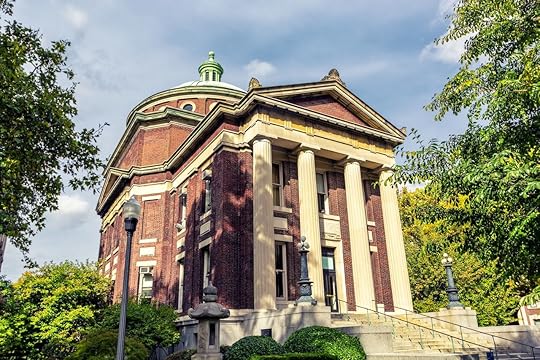
Photo: Dmitrii Sakharov/Shutterstock
In 1966, Earl Hall at Columbia University in New York City became the first collegiate institution in the United States to host an LGBTQ student group. Robert Martin founded the Student Homophile League, with permission from Columbia University, Barnard College, and religious advisors. The group then began meeting in Earl Hall — the center of student religious life. In 1970, the group changed their name to the Gay People at Columbia (or Gay People at Columbia-Barnard). Since its creation, the Gay People at Columbia group has made substantial changes in the LGBT scene at the university and beyond. Guests can still pay a visit to Earl Hall to see the group’s headquarters that is now listed on the National Register of Historic Places.
7. Dr. Franklin E. Kameny Residence — Washington, DC
Considered to be the father of gay rights activism, Dr. Franklin E. Kameny moved into a residence in Washington, DC that soon thereafter became the headquarters for a gay civil rights organization that began in the 1960s. In fact, according to the National Park Service, the Kameny House “served as a meeting place, archives, informal counseling center, headquarters of the Mattachine Society, and a safe haven for visiting gay and lesbian activists.” Some time after moving into the home, Kameny founded the Mattachine Society, which later became a trailblazing LGBTQ rights organization — and eventually helped overturn the American Psychiatric Association’s definition of homosexuality as a mental illness. Kameny was also the first openly gay man to run for office, though he did not win. And, although it’s listed on the National Register of Historic Places in the United States, the residence was purchased by another homeowner after Kameny died in 2011.
8. Walt Whitman House — Camden, New Jersey
The Walt Whitman House, located in Camden, New Jersey, was the last residence of poet Walt Whitman before he died in 1892 and was the setting for many of his later works. Thought to have been gay or bisexual, his relationships and poetry indicate that the poet was very active in the LGBTQ scene in the 19th century. Over a century later, the Walt Whitman House is operated as a museum by the New Jersey Division of Parks and Forestry, and contains many of the poet’s actual possessions inside.
9. The Women’s Building — San Francisco, California

Photo: The Women’s Building of San Francisco/Facebook
Beginning in 1973, the Women’s Building in San Francisco is a nonprofit arts and education center known for advocating self-determination, gender equality, and social justice for a number of minorities — including the LGBTQ community. Inevitably, this building housed the nation’s first woman-owned and -operated community center. In 1984, muralists created one of the most renowned pieces of art in San Francisco on the outside of the building, depicting famous women and their contributions to society. To this day, visitors can enjoy the historical gravity of this building — along with the building’s mission to help women and girls find their rightful place in the world.
10. The Furies Collective — Washington, DC
Established in the summer of 1971 in Washington, DC, the Furies Collective was a communal lesbian group that gave a voice to lesbian separatism through its newspaper, The Furies. Serving as a prime example of the lesbian feminism that emerged from the women’s movement in the 1960s and 1970s in the US, the Furies Collective was a group of 12 lesbian activists who lived together in one home — working and contributing to the chores of the home as a unit. While the collective did not last long, many present-day lesbian feminists cite the importance of this community’s existence. The group’s home became the first lesbian site put on the list of National Register of Historic Places — though it’s a private residence that isn’t open to the public.
11. Gay Liberation Monument — Manhattan, New York
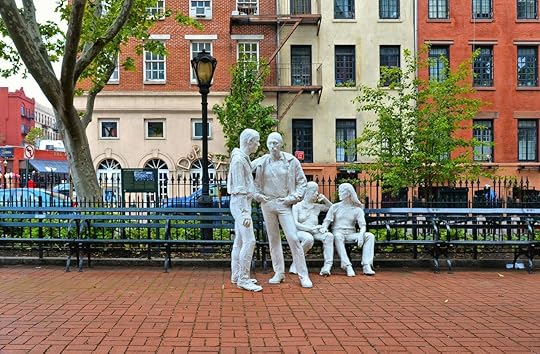
Photo: poludziber/Shutterstock
Located on Christopher Street in the West Village, the Gay Liberation Monument, made by American artist George Segal, was dedicated on June 23, 1992, to the events that occurred at the Stonewall Inn decades earlier. It’s also been dedicated to LGBTQ rights in general and serves as a reminder of the area’s rich history as it pertains to the gay community.
12. James Merrill House — Stonington, Connecticut

Photo: The James Merrill House & Writer-in-Residence Program/Facebook
This home in Stonington, Connecticut, was the original home of poet James Merrill and his partner David Jackson from 1954 until Merrill’s death in 1995. Merrill also wrote his book-length epic poem, The Changing Light at Sandover, based on his and Jackson’s communications with the spirit world via their Ouija board set on the third floor. In the years since his death, the Stonington Village Improvement Association has designated Merrill’s former home as a rent-free space for writers and scholars to use. In 2016, it was designated as a Historic National Landmark.
13. Federal Building — San Francisco, California

Photo: Rafael Ramirez Lee/Shutterstock
While the Federal Building in San Francisco, California, hasn’t received any special designation by the government declaring it an important site in LGBTQ culture, it once saw a truly groundbreaking protest demonstrated by members of the LGBTQ community. In 1985, a large number of AIDS activists chained themselves to the door of the building, asking for an increase in funding for AIDS-related research, medical care, and social services. These protests were some of the biggest at the time, as they lasted for around 10 years, drawing large crowds and plenty of support. This protest is partially credited with bringing awareness to the AIDS crisis in San Francisco.
14. Pauli Murray Family Home — Durham, North Carolina

Photo: Pauli Murray Project/Facebook
This home belonged to the incredibly prolific reverend and pioneering legal advocate of African-American civil rights in the 20th century. It was originally built in the first decade of the 20th century by Pauli Murray’s maternal grandparents and is the place where Murray was raised as a child. Murray, certainly ahead of her time, longed to be a man and even took hormones for a short period, but eventually settled into life as an androgynous lesbian. As a queer African-American woman, Murray was more deftly able to empathize and fight for the rights that she believed should exist for other minorities. Throughout her long list of accomplishments, Murray was the first African-American woman to be ordained as an Episcopal priest. Currently, funds are being raised to turn her childhood home, considered a National Historic Landmark, into a museum for the public and a way to memorialize her amazing legacy.
15. Stonewall Inn — Manhattan, New York

Photo: Glynnis Jones/Shutterstock
We’d of course be remiss not to mention what is perhaps the most famous LGBTQ landmark in all of the United States. Serving as the site of the Stonewall Riots in 1969, the Stonewall Inn was originally constructed in the 1840s as stables. Then, in 1966, the then-nightclub and restaurant favored by the LGBTQ community was purchased by members of the mafia and turned into a gay bar. Until the riots in 1969, the bar was an intimate escape for members of the LGBTQ community, though it was an establishment frequently raided by police.
The police activity in the bar eventually came to a head on June 28, 1969, when an extremely violent protest took shape in the early morning hours when members of the NYPD were trapped inside of the bar due to the presence of angry LGBTQ protesters outside of the bar. This event eventually led to the emergence of gay pride parades around the nation — usually held during the month of June to honor the Stonewall Riots. Though Stonewall Inn closed in 1969 and the space was owned by a number of different businesses throughout the years, it was reopened as an LGBTQ bar in 2007, honoring its historic past. 

More like this: #TravelingWhileTrans: How to stay safe while seeing the world
The post The 15 most important LGBTQ landmarks in the US appeared first on Matador Network.

February 6, 2019
Tallest observation decks
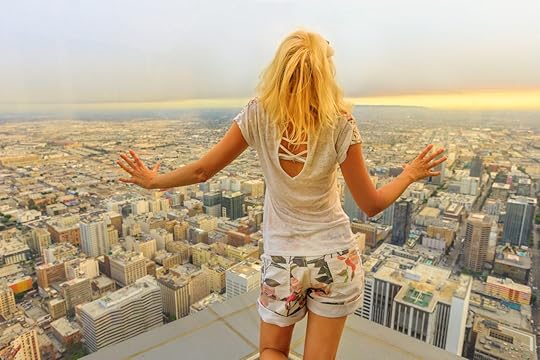
Observation deck pictures are always tricky. Even if you’ve got a steady hand to hold a panoramic shot, inevitably some school group or busload of tourists will wander into your frame and give your picture a nice, fanny-packed blur. Such is the challenge with visiting Chicago’s Willis Tower or the Space Needles of the world, where hundreds of other people are clambering for the same 360 degrees. But in many tourist-packed cities and lesser-known destinations, you’ll find observation decks that most of the masses haven’t discovered. Here are nine phenomenal views you won’t have to share with too many others.
1. Sky View Observatory — Seattle, Washington

Photo: bjaru/Shutterstock
Seattle’s most famous observation deck at the Space Needle got a major overhaul last year, and though it’s still worth a visit you’ll be joined by every person who’s never been to Seattle before. Better to head to the city’s tallest building at the Columbia Center, where the entire 73rd floor is now open to the public as the Sky View Observatory. The view on a sunny day can’t be beat, with the Olympic Mountains to the west over Elliott Bay, the Cascades to the east over Lake Washington, Mount Rainier to the south, and the Space Needle to the north. It’s the best way to immerse yourself in America’s best skyline, and take in all the natural beauty of the Pacific Northwest.
2. San Jacinto Monument — Houston, Texas
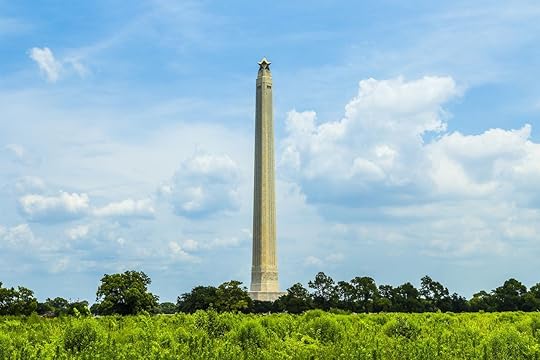
Photo: travelview/Shutterstock
Ah Texas, the only state in America with historical sites devoted to its own independence. This makes the state especially fun to visit as you’ll learn a history nobody outside the state really knows. For example, you can go to the San Jacinto Monument, a museum that memorializes the battle of San Jacinto, where Sam Houston led a surprise attack on Santa Anna’s camp, winning a battle that ultimately began Texas’ independence from Mexico. The battlefield is marked by this 570-foot obelisk east of Houston, topped with a 220-ton star in true Texas style. From the top floor observation deck, you’ll find stunning views of the Houston Ship Canal and Battleship Texas, with only the occasional school group to contend with.
3. OUE Skyspace LA — Los Angeles, California
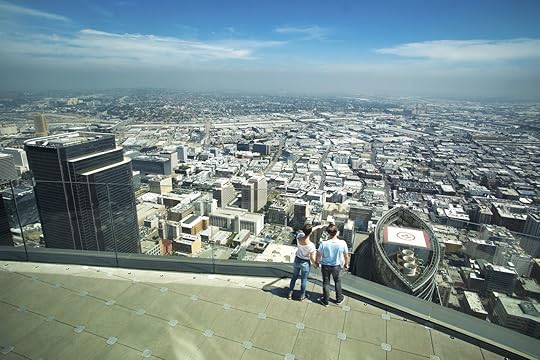
Photo: OUE Skyspace LA
With countless hikeable scenic overlooks, LA is already full of natural observation decks where you can get out and enjoy the California sunshine. But as Downtown Los Angeles has boomed recently, its iconic US Bank Tower has amped up its observation deck with views from the Pacific Ocean out to the San Gabriel Mountains. This January it added a slew of interactive exhibits, where you can walk on a virtual red carpet full of flashing lights, record a track in its recording studio, or spray something on its graffiti wall.
4. Observation Deck at CEB Tower — Washington, DC

Photo: Observation Deck at CEB Tower
The nation’s capital isn’t exactly teeming with spots to scope the entire skyline of monuments, but the CEB Tower just across the Potomac River in Rosslyn, Virginia provides perfect panoramas of the mall. And it’s far enough away that it’s not always teeming with tourists. The deck stands 400 feet up and gives 360-degree views of the city and the Virginia hills to the west.
It also has interactive exhibits so you can hear holograms of historical figures tell the story of the city, as well as the monuments that dot the landscape. You can also grab a drink at The View DC Champagne Bar, or virtually tour DC from above at HoverDC.
5. Kinzua Bridge Sky Walk — McKean County, Pennsylvania
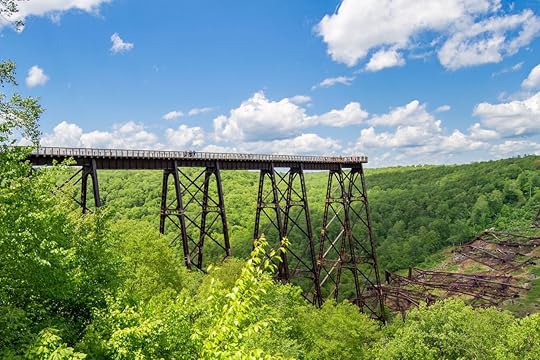
Photo: Daniel Tarr Photography/Shutterstock
Observation decks don’t just have to give you towering perspectives of skylines or oceans. They can be excellent natural vantage points as well, as anyone who’s been to the Clingmans Dome or the Grand Canyon Skywalk can attest. The most beautiful one most Americans haven’t heard of is at Kinzua Bridge State Park in northern Pennsylvania, just south of the New York border. At one time this bridge was the highest railroad bridge in the country, but in 2003 a tornado ripped out the center section and left this side dangling out over the valley below. It’s been transformed into a visitors center with a glass-floored sky walk where you can stare straight down into the forest, and in the fall it’s the northeast’s best place to view the turning leaves.
6. Metropolitan Museum of Art Cantor Roof Garden — New York City, New York
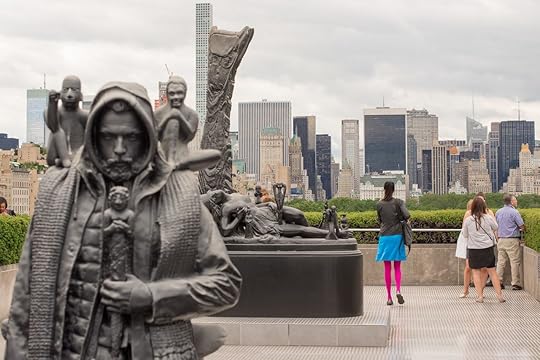
Photo: Page Light Studios/Shutterstock
Though the Metropolitan Museum of Art is no big secret among tourists, the serene observation deck on its roof still somehow flies under the radar. Literally under the shadow of the Empire State Building and One World Trade Center, this rooftop garden sports views out over Central Park and onto the skyline of midtown Manhattan. Once there you’ll find a swanky martini bar and a small cafe, and during the summer it showcases different artists with a rooftop exhibit. There’s no extra charge to visit the rooftop, meaning you get a museum and an observation deck for one only-mildly-expensive price.
7. Kemper Building — Chicago, Illinois
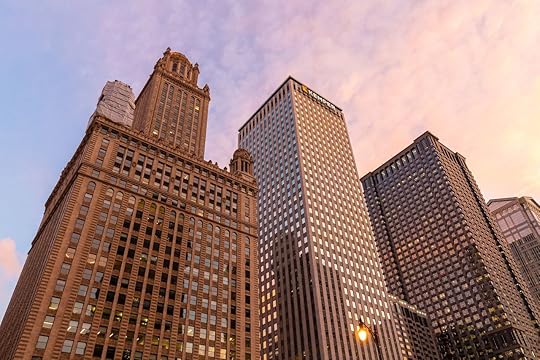
Photo: David Harmantas/Shutterstock
Heading to the top of the Willis Tower or the Hancock Building seems like a must-do in Chicago, until you get there and see a line typically reserved for free burrito day at Chipotle. Though the views aren’t as high, the observation deck at the 522-foot Kemper Building is still pretty grand, with 360-degree views of the Chicago River and the surrounding buildings. You won’t have to worry about fighting for selfie space either, as this 41st-floor observatory is only open to those on Chicago Architectural Foundation tours.
8. Harmon Observation Tower — San Francisco, California
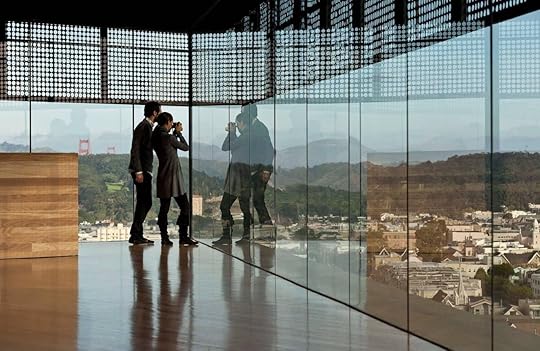
Photo: de young Museum/Facebook
The best view of San Francisco is probably from the roadside viewpoint across the Golden Gate Bridge at Battery Spencer Overlook. But this museum in Golden Gate Park known for its sculpture gardens has one of the best publically-accessible indoor views of the city. The Harmon Observation Tower stands above the de Young Museum, offering views around the skyline, San Francisco Bay, and the Marin Headlands. Because it’s hidden in the park, most tourists don’t make it out here, leaving the views for you and the handful of other people who discovered it. You don’t even need to pay the de Young admission fee to take the elevator up the tower.
9. Buffalo City Hall — Buffalo, New York
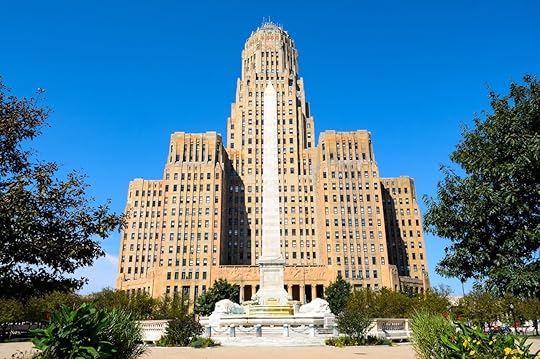
Photo: Zack Frank/Shutterstock
Buffalo’s Art Deco city hall is one of the grand architectural gems of the early 20th century, a stunning example of the industrial wealth of the city during that time. Though touring the building is a must for anyone with an appreciation for architecture, a trip to the top lands you in a spacious observation deck, where you can see all the way to Lake Erie and Niagara Falls on a clear day. The 28th-floor observatory is free and open to the public on weekdays, and if you’re lucky enough to travel here during the winter you’ll have the whole, majestic, snow-blanketed wonderland to yourself. 

More like this: These skyscrapers have glass-bottomed observation decks for stomach-dropping views
The post These American observation decks have all the views, and none of the tourists appeared first on Matador Network.

The best things to do in Mauritius

With its postcard-perfect azure waters, palm-fringed beaches, white sand, and more luxury hotels than you can count, the tiny island of Mauritius seems like a classic honeymoon destination. But there’s a lot more to do on this isle east of Madagascar than doze on a hammock or stroll by the shore holding hands. “Paradise Island,” as locals call Mauritius, is also home to vibrant reefs, dense forest, and even mountains, making it an ideal place for every adventure activity from scuba diving and stand-up paddling to hiking and even four-wheeling. Here’s everything you can do to get your heart pumping in Mauritius — boo optional.
Explore a vast underwater world.

Photo: ohrim/Shutterstock
Virtually the entire island is fringed by a coral reef, making scuba diving and snorkeling a favored pastime for locals and tourists. Step off the shore, stick your face below the water, and you’ll be sure to see starfish, sea urchins, eels, and even a turtle or two in no time at all. Those with a penchant for the deep should head to the northwest part of the island, where the best dive sites are. Small breaks in the reef create channels where you can find large schools of fish and even some small shark species. The waters are warm and clear, and the diving is relatively easy, so it’s a great spot for beginners and free divers as well.
Ride in a submarine.

Photo: Blue Safari/Facebook
While Mauritius is famed for offering fantastic diving and snorkeling opportunities, anyone who doesn’t want to get wet can also see the underwater world in a submarine. Located in the popular Trou-aux-Biches area, the unique Blue Safari company allows you to dive an astonishing 115 feet below sea level without ever donning a snorkel mask. You can marvel at the reefs up close, catch a glimpse of a majestic sea turtle, and even take a turn around a real shipwreck. Adult fares are about $142.
Learn to kitesurf.

Photo: ohrim/Shutterstock
Over the last few years, Mauritius has become known as one of the world’s best kitesurfing and windsurfing destinations. Combining an ideal mix of consistent winds, flat water, and great wave spots, it caters to a wide range of skill levels — from beginners to advanced wave riders. The best place to learn is in Le Morne, where a wide, flat water lagoon stretches out, offering a huge shallow water space for beginners to get the hang of the sport. For those who’ve already mastered kitesurfing, Pointe d’Esny on the island’s southeast coast is foiling heaven. Just watching these guys in action as they fly over the water will get your heart racing.
There are several other spots on the island where you can take to the water, including Belle Mare, Anse La Raie, and Bel Ombre. If you want some professional guidance, talk to the experts at Planet Kitesurf Holidays. Its staff travels regularly to the island, and they know it like the back of their hand.
Go for a SUP.

Photo: ohrim/Shutterstock
Stand-up paddle boarding — or SUPing, as it’s more commonly known — is growing in popularity the world over. While many of the hotels offer SUPs free of charge, you can also spend a few days just exploring the island on your own. The western side of the island, at Black River and Le Morne, is one of the best places for a leisurely paddle. Here the lagoon opens into a marina area, while mangroves and small inlets flank the shoreline. In these areas, peace and tranquility reign; keep an eye on the bank for a chance to spot some of the local residents — including crabs and a wide variety of bird species.
Hike it out.

Photo: MPSPhotography/Shutterstock
As Mauritius is volcanic in nature, jutting out in the center of the island you’ll find mountains begging to be hiked, four of which reach well over 2,000 feet above sea level. You can visit cold mountain waterfalls, trek to the top of panoramic viewpoints, and catch a glimpse of some of the island’s endemic species, such as the pink pigeon. While Mauritius has four national parks, Black River Gorges is the biggest and is a great place to start any hiking adventure. The park covers an area of over 23 square miles, about two percent of the island, and has a number of entrances where you can begin your hike.
Signs at the entrances lay out several paths with various degrees of difficulty and clearly show where the routes intersect. A hike through the national park will take you through a range of landscapes, from dense forests, past bumbling streams, to rocky mountain cliff faces not for the faint of heart. Start your hike early and take a bathing suit, as the daytime temperatures can build up quickly, and you’ll want to take a quick dip in one of the clear pools along the way.
Put pedal to the metal.

Photo: Big Foot Adventure/Facebook
If you prefer to see the island on four wheels, Mauritius offers a number of options for speed freaks. In the isle’s center, you’ll find Fun Drive Mauritius, where you can explore the island on quad bike or an all-terrain vehicle. You get to race around sugar cane fields, over muddy dunes, and through the forest on this open buggy. They have smaller vehicles specifically designed for kids as well, so even the little ones can enjoy racing around on their own track. Contact them to book, as prices vary depending on age, time duration, and type of excursion.
Down in the island’s south end, Big Foot Adventure offers quad bike tours that take you to some of Mauritius’ more hidden attractions. You can visit a stretch of wild coastline that isn’t protected by the reef, discover hidden waterfalls and pristine river pools, drive to the top of a mountain lookout point, and zip around a sugar cane factory. The trips start at $105 for two hours and go up to $165 a pop for a five-hour adventure.
Sail to tiny islets.

Photo: Catamaran Cruises Mauritius/Facebook
Around the Mauritius coastline, you’ll find a variety of sandbanks and little islands that are well worth visiting. The best way to discover these beauties is to sail to them. Catamaran Cruises Mauritius offers a number of day trips to see these islands, with snorkeling stops along the way and a fresh fish braai for lunch also thrown in — beginning at $68 per person. The most popular trip is a visit to Ile aux Cerfs. Given the islet’s warm water, natural lagoon pools, and wide white-sand bank, most people are content just to sit and enjoy a relaxing afternoon in paradise. However, if the sailing experience wasn’t enough of an adventure for you, you can book a parasailing experience with one of the beach vendors for a bird’s-eye view of the tiny isle.
Visit uninhabited Indian Ocean islands.

Photo: Benny Marty/Shutterstock
Several trips to explore the uninhabited islands of the Indian Ocean depart from Mauritius, yet most of these last days or even weeks. If you don’t have that amount of time, add in a visit to Ile aux Aigrettes into your Mauritius vacation. You can arrange tours here with the Mauritian Wildlife Foundation, which manages the small island. The fees you pay will go back into protecting this unique place. Walking around the coral island, you’ll see ancient ebony trees and marvel at the size of the giant tortoises found here. The guides have a wealth of knowledge on the various species of plants and animals found in Mauritius, as well as a few that are no longer around, including the famed and tragically extinct dodo bird.
Fly with the birds.

Photo: Lavilleon Natural Forest/Facebook
Finally, if you want an epic experience that will leave your heart in your stomach, go to Lavilleon Natural Forest, where you’ll find an 850-foot-long zip line through the trees. Located 280 feet above the forest floor and reaching speeds of 60 mph, it’s a feat that will leave adrenaline junkies wanting more. And there is more. After the zip line, you can walk on a treacherous 850-foot-long suspension bridge over a waterfall. 

More like this: Why Mauritius is worth traveling to beyond the honeymoon beaches
The post 9 epic Mauritius adventures that show why locals call it Paradise Island appeared first on Matador Network.

Wine tasting in Virginia

Wine wasn’t the first thing on the minds of the initial English settlers who reached the shores of Jamestown in 1607, but it also wasn’t the last. Captain John Smith wrote about America’s native grapes just two years later, kicking off interest in what would eventually become the oldest wine growing region in the US. More than 400 years later, wine is still very much on the minds of Virginians — one might say more now than ever before.
Virginia is the sixth largest wine grape producer in the US, home to around 300 wineries that attract some 2.2 million visitors every year. Since 2010, the number of wineries has increased more than 30 percent as winemakers from around the country and the world are leaving big-name regions to come to Virginia. And while the state has plenty of wine history, those winemakers aren’t coming for the past. They’re coming because Virginia has no set rules, no market pressure dictating which grapes they can and can’t use, and few (if any) corporate-owned wineries making wine for the masses. In short, Virginia is where experienced winemakers can come to innovate and new winemakers can come to make their mark.
“While we are one of the [country’s] oldest wine regions, I don’t feel any pressure to keep with tradition,” Kirsty Harmon, the winemaker and general manager at Blenheim Vineyards, told Matador Network. Harmon was born in the Netherlands, studied viticulture and enology in California, and made wine in France and New Zealand before landing in Virginia. Here, she said, “there is more of a spirit of experimentation and innovation rather than a need to stick to tradition.”
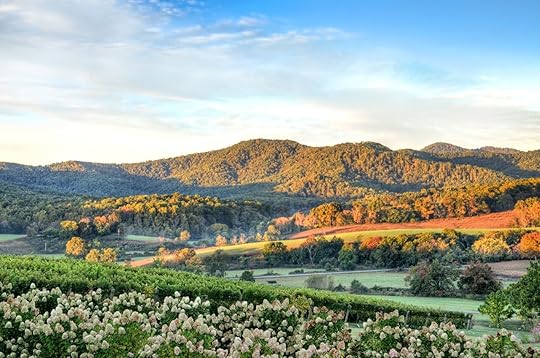
Photo: Andriy Blokhin/Shutterstock
Virginia is home to seven American Viticultural Areas that span from the coast to the Blue Ridge Mountains: North Fork of Roanoke, Northern Neck George Washington Birthplace, Rocky Knob, Shenandoah Valley, Virginia’s Eastern Shore, Monticello, and Middleburg. The vineyards grow traditional Bordeaux grapes like cabernet franc and petit verdot, but it’s not uncommon to see Spanish grape varieties as well. Some of the most respected Virginia wineries grow Italian grapes like barbera, sangiovese, and nebbiolo. Many grow chardonnay and viognier. Even a local American grape, Norton, gets love from Virginia winemakers.
There’s no single definition for Virginia wine. A somewhat cynical take from that is that Virginia hasn’t found its groove yet. Virginia’s AVAs don’t dictate what grapes to use, and the cost of doing business in the state is low enough that the wine isn’t totally dictated by market demand. That’s led to a free-flying, try-everything attitude.
“That’s what is exciting about working here now and what is attracting young winemakers from more established regions,” Ben Jordan, the winemaker at Early Mountain Vineyards, said. “We’re doing work that only gets to be done once on any scale in the history of a place. Sure, you can play around with new varieties in established regions, but once the market takes hold, this sort of work gets pushed to the periphery.”
Looking back on Virginia’s long history, maybe we shouldn’t be surprised. The state’s history is filled with winemakers trying, then failing, and then trying again. The cycle of failure means Virginia’s wine country has been innovating its way to relevance from the start.

Photo: Early Mountain Vineyards
Grapes were one of the first things that colonists in Jamestown noticed in the new world. Writing about the local landscape, Captain John Smith of Pocahontas fame noted that grapes were “in great abundance in many parts that climbed to the tops of the highest trees.” The taste didn’t quite match up to the wine made from European grape varieties, so the settlers took a different route. In 1619, Virginia passed a law that required every male to plant 10 vines imported from Europe. Growing conditions proved too tough, and a similar attempt to grow European grapes a century later by Thomas Jefferson, America’s “first distinguished viticulturist,” failed as well.
It wasn’t until 1817 that Virginia wine started to click when a Richmond man named Dr. Daniel N. Norton developed a grape that combined native grapevine rootstock with European vines. It was sturdy enough to survive the native pests and cold winters, and produced grapes tasty enough for a balanced wine. At the Vienna World’s Fair in 1873, a Norton wine made by the Monticello Wine Company was recognized as the “best red wine of all nations.”
Finally, after another 100-plus years of Virginia wine starting up then stopping, another innovation in grafting created Virginia wine as we know it. Italian viticulturists Gianni Zonin and Gabriele Rausse arrived in 1976 and grafted vinifera buds to the rootstocks of native American grapevines. To everyone’s surprise, it worked and Rausse became known as the “Father of the Modern Virginia Wine Industry.” The winery, Barboursville, still makes some of the most highly regarded wine in Virginia. Using Rausse’s techniques as a starting point, Virginia went from six wineries in the 1980s to more than 270 today.

Photo: Barboursville Vineyards/Facebook
The winemaking world is divided between Old World wines (from Europe) and New World wines (from everywhere else). The former continues to have a heavy influence on the latter to this day, partly because of the quality of European grape varieties, partly because of learned tastes, and partly because of colonization. But Old World winemakers are required to follow strict rules.
“In some parts of the world, what kind of grapes you grow is legally dictated,” Lee Hartman, winemaker at Bluestone Vineyard, said. “And while those regions do what they do very well, and are known for it, I find it less interesting. And then in established wine regions in this country, the market dictates what is planted more than looking into what might grow best.”
Less market influence and open laws allow Virginia winemakers to try things like making wine using 100 percent petit verdot, a grape traditionally only used for blending in small amounts, or 100 percent roussanne. Viognier, a grape not widely grown outside of France, is another example. Virginia declared viognier as its signature grape in 2011, and more than 100 winemakers use it. Despite being relatively widespread, each winemaker is still experimenting with different styles rather than there being a uniform flavor profile. Virginia’s viognier is heavily oaked by some, and not oaked at all by others. Depending on where you go it can be sweet or bone dry.
Then there’s petit manseng, a grape that few vineyards outside of southwest France work with that’s almost always blended or made into a sweet wine. Even people with a high level of wine knowledge are generally unfamiliar with the grape. Yet, when handled the right way, it’s perfect for Virginia’s tough growing conditions. Virginia winemakers are capitalizing on that to make some of the only dry petit manseng wines in the world by experimenting with harvest times, malolactic fermentation, and aging on the skins. Today, you can find 100 percent petit manseng from Early Mountain Vineyards, Michael Shaps Wineworks, and others.
Virginia’s single variety petit manseng and petit verdot wines show the opportunity in the region. Wine drinkers aren’t going to walk into a Virginia winery and ask for either of those grapes by name. Winemakers are able to experiment without getting too bogged down by sale numbers, however, because many sales are done straight from the winery where consumers can be educated while they drink, instead of going in with the mindset that the only like pinot noir.
“Virginia is still very much in flux, still emerging,” Jordan from Early Mountain Vineyards said. “Whereas California has grape varieties as brand names, we are still experimenting with variety and place, and we are doing the foundational work that they did in the mid-20th century.”
Experimentation is far from over. Other grapes being tried out in Virginia include albarino, tannat, and gamay, as well as hybrid European and American varieties like chambourcin and vidal blanc. All this is to say that while current experimentation points to truly unique wines like varietal petit verdot and petit manseng, the future could result in something entirely different.

Photo: Early Mountain Vineyards
“With my husband, we are sometimes calling Virginia wine industry the ‘Wild West,’” Katell Griaud, winemaker at Slater Run Vineyards, said. Griaud worked in France and New Zealand before coming to Virginia. Virginia is along the Eastern Seaboard, but earns a nickname like the Wild West because people can plant anything, anywhere. It’s also because there’s a high turnover rate of wineries in the area looking to establish themselves in Virginia’s wine scene.
Virginia, of course, isn’t the only region with an experimental and innovative edge. The story of modern American wine in general is a story of upstart regions trying to prove their wine is worth a shot. Take the Judgement of Paris. In 1976, California winemakers pitted their cabernet sauvignon and chardonnay against French Bordeaux wines, which were widely considered the best in the world. Judges tasted them blind and chose the Californians. Voilà: California was the most innovative and interesting region stateside at the time.
Then came the Robert Parker days, when high alcohol, heavily oaked wine from California was deemed not just avant garde, but preferred. Wineries around the world started copying what the region was doing.

Photo: Early Mountain Vineyards
More recently, there’s been a focus on wine made outside of the powerhouse California regions. The New York Times wine critic Eric Asimov wrote in 2017 that “Oregon is right now the single most exciting winemaking area the United States.” He also added that great things were happening in Washington, California, New York’s Finger Lakes region, Michigan, Vermont, and Texas. Notably, he left Virginia off his list. In fact, a cursory search of “Eric Asimov” and “Virginia” shows his writings about Virginia wine are limited to stories on shipping legalities and a disagreement about whether a Virginia red wine was the best choice for a meal.
But back to Asimov and his palate, since his tastes and his stories are one some of the most powerful when it comes to American wine. His reasoning for his 2017 declaration that Oregon is the most exciting region? Because “nowhere else does the level of quality seem so high, the perspectives so diverse, or the experimentation so fierce as it is in Oregon right now.”
All qualities that could be said of today’s Virginia winemakers.
“Virginia is a challenging place to make wine due to the weather, but it is also one that provides the most opportunity,” Harmon from Blenheim said. “Since there is not a really long history of successful grape growing, we are now trying to understand what varieties work best here as well as what style of winemaking makes the most sense. There is a lot of freedom to experiment and I don’t think it would be as possible, or as accepted, in a region that is more established.”
Not every experiment is a game changer. For every great Virginia wine I’ve had, there have been one or two “meh” to unpalatable ones. Innovation, after all, is just as much about finding out what doesn’t work as it is about finding out what does. But unlike the cutthroat industry on the West Coast, where vineyards have to make their cabernet sauvignon and make it right lest they be run over by the competition, wineries in Virginia can afford a misstep. Local buyers support their local wineries, and as long as the wine is being bought, winemakers have the economic capacity to push boundaries.
“In terms of tradition, it is important to have inspiration and to understand benchmarks,” Jordan said, “but the best thing to happen to Virginia winegrowing has been the evolution of wine consumption in the past decade. Wine buyers and drinkers are more open-minded and adventurous than they have ever been, and we can shed the burden of imitation and make wines that highlight the fruit we grow in Virginia.” 

More like this: The best place to go wine tasting in all 50 states
The post If you want to see the Wild West of wine, go to Virginia appeared first on Matador Network.

All about Cornish pasties

Many cuisines have a dish that consists of a sweet or savory filling wrapped in a bread shell. Empanadas, for example, are found throughout Portugal, Spain, and much of Latin America, and calzones, though usually larger, serve a similar purpose in Italy. Arguably the most fervently loved version of this portable filled-bread food category, however, is the pasty.
The pasty (rhymes with “nasty”) is a traditional workingman’s meal from Cornwall, England. It’s traditionally made with beef, diced potatoes, onion, and rutabaga, although the proportions and type of meat change depending on who’s making it. People with a sweet tooth will be glad to hear that pasties can also come 50/50, with half being savory and the other half sweet.
While Cornwall is the pasty’s true home, its adopted home — where there are countless pasty storefronts, generations of pasty eating families, and an annual pasty festival — is some 3,500 miles away in Michigan’s Upper Peninsula. This is how the pasty became the signature dish of a little sliver of Michigan.
How the pasty was invented in Cornwall, England

Photo: Foodio/Shutterstock
It’s impossible to talk about pasties without talking about mining. Cornwall is known for its tin mines; tin was gathered through prehistoric times and mined straight through the Roman era up to the Industrial Age. For thousands of years, entire towns and villages depended on the hard and dirty job of mining for a living. During that time, miners were sent underground with a pasty as their meal for the day.
Pasties contained all the nourishment a miner needed. The miner’s initials would often be carved into the pastry itself so that after the miner ate half for breakfast, he would know which pasty was his for lunch.
It wasn’t all about what was inside, though. The shape of the dough, especially that crimped crusty edge, was just as important as the filling. A miner could hold the entire pasty by the crust, eat the middle, and then toss the edges aside. They weren’t being finicky like that one person you know who always had their mom cut the edges off their sandwich; using the crust as a disposable handle kept the miners from contaminating their food with whatever arsenic might be lurking on their hands.
Legend has it that the crusts didn’t just go to waste, either. They say small goblins, known as buccas, hang out in the tin mines and cause all kinds of mischief. Traditionally, once a miner finished eating his crust and had thrown it aside, the buccas would come forth to eat it. This was said to keep the goblins happy and avoid any “accidents” from happening to the humans underground. The legends don’t address whether buccas ever got sick from arsenic poisoning, though.
How the pasty got to Michigan

Photo: Brent Hofacker/Shutterstock
Mining in Cornwall slowly started to decline in the mid to late 1800s. Cornish mines couldn’t keep up with the low cost of foreign tin so mining companies closed shop, forcing miners to find work elsewhere. Some Cornish miners and their families left the UK altogether, traveling to Australia, South Africa, and the US. The emigration was prolific enough that people started saying that wherever there’s a mine, you’ll find a Cornishman in it.
While the exodus was going on in the 1840s, Michigan and its Upper Peninsula were busy joining the Union. The Upper Peninsula was a known spot for copper; Native Americans harvested copper, and mining was on the mind of the early immigrants to the region. The newly jobless people from Cornwall had the exact skills needed to start up Michigan’s mining communities — and knew just the food to get the miners through the day.
Later waves of immigrants from Italy and Finland picked up the pasty tradition from the Cornish miners as they assimilated into American society. The Finnish especially latched onto the pasty, and (somewhat controversially depending on who you’re talking to) swapped the rutabaga for carrots.
Mining in the region declined after World War II, but the pasty stayed — eventually becoming the adopted, unofficial state dish. In 1968, Governor George Romney declared May 24 the first statewide Michigan Pasty Day.
It took some innovation to avoid arsenic, economic tumult in the mines, and a 3,500-mile journey, but pasties are completely ingrained in the life of people in Michigan’s Upper Peninsula. Just make sure you pronounce it right when you get a chance to visit.
The best places pasties in Michigan

Photo: Lawry’s Pastry Shop/Facebook
Lawry’s Pasty Shop in Ishpeming and in Marquette: Lawry’s opened in 1946 and it’s kept things traditional ever since. The original in Ishpeming still has regulars that frequent the spot, and both spots are owned by the grandsons of Madelyne and Jim Lawry who opened the shop. Options include mini pasties, and both 12- and 17-ounce beef pasties.
Lehto’s Pasties in St. Ignace: Around since 1947, Lehto’s changes up the shape a bit with a log-shaped pasty. It’s been a favorite for decades despite its break from tradition. Lehto’s offers free ketchup or you can pay for gravy on the side.
Connie’s Kitchen in Calumet: The place to go if you want to see what all the hubbub is in the battle between Finnish style (carrots) and traditional (rutabaga). Connie’s Kitchen is all Finnish and weighs a full pound.
Joe’s Pasty Shop in Ironwood: This is pretty much your last and best chance to get an Upper Peninsula pasty before hitting Wisconsin (or your first, if you’re coming from the Badger State). Joe’s opened in 1946 and sells both Cornish- and Finnish-style pasties.
The Pasty Oven in Quinnesec: If meat and root veggies don’t cut it for you, feel free to break from tradition at The Pasty Oven, where you can order a pepperoni pizza or breakfast pasty in addition to the classic recipe. 

More like this: 8 foods and drinks that Michigan locals love
The post Why people from Upper Michigan are obsessed with pasties appeared first on Matador Network.

$12,000 Disney tour
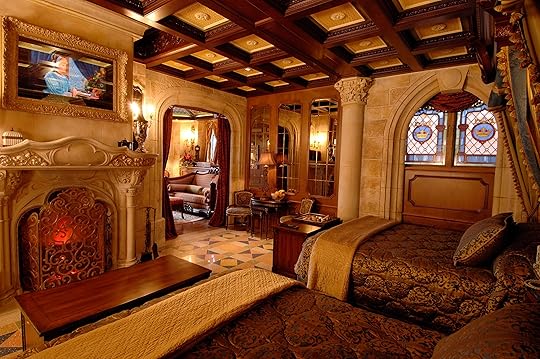
Everyone who visits Disney World is supposed to feel like they’re part of a dream, but the new VIP experience takes it up a few notches and turns you into Disney royalty. The World of Dreams tour, at a whopping $12,000 (park tickets not included), accommodates up to six people for a magic-filled, 12-hour day. Guests who take advantage of this experience will be able to fully customize their day across all four theme parks, restaurants, and more. The most enticing element of the experience is the VIP tour of the Cinderella Castle Suite in the Magic Kingdom at Walt Disney World Resort. Usually, this area is off-limits to the public, and only made accessible to contest winners or for fundraisers for charities.

Photo: Walt Disney World/Facebook

Photo: Disney Parks

Photo: Disney Parks
In addition to the suite tour, your day at the park will include luxury transportation to the parks; backstage access at all theme parks and attractions; three meals, snacks, and even some alcohol; access to any Walt Disney World restaurant without reservations; special viewing locations for theme park evening shows; and front-of-line access to every attraction. You can also pay $10,000 for each additional day you’d like to add onto the experience.
The World of Dreams tour isn’t yet listed on Disney’s official website, but reservations can be booked by calling the reservation line at 407-560-4033, and must be made at least a week in advance. 
H/T: Insider

More like this: 7 epic family trips that aren’t Disney World
The post Disney’s new $12,000 VIP experience takes you inside Cinderella’s Castle appeared first on Matador Network.

What is forest bathing

Japanese forest bathing sounds like a spa treatment you probably can’t afford. Or something exclusive to the adorable snow monkeys from the lead-ins at the Nagano Olympics and the Great Plains Zoo.
But it actually has nothing to do with soaking in water, and everything to do with soaking in nature as a way to counteract the sensory overload of modern life.
Forest bathing, or shinrin-yoku as the Japanese call it, surmises that by spending time “bathing” in the forest, people can reduce stress, lower blood pressure, and generally undo the medical ills living in a big city brings. Matador Network’s Art Director Mike Dewey and Supervising Producer Kati Hetrick set out to see if forest bathing really did change one’s body, going straight to the source in Japan to test it out.
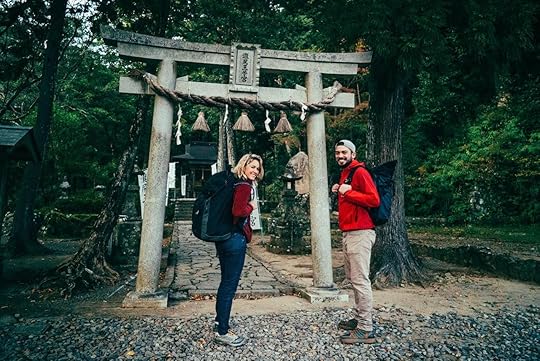
Photo: Mike Dewey
First, they spoke with Japanese researcher Yoshifumi Miyazaki, who explained that for 99.9 percent of human history we’ve lived in nature, and only during the last 0.1 percent have we trapped ourselves in urban jungles. Effectively, our biology wants us to be around trees, fresh air, and animals. And going against that by living in congested cities with sedentary lifestyles, we’re creating stress. With that comes health problems, dissatisfaction, and a general lack of well-being.
Armed with this knowledge, the duo set out for four solid days of forest bathing while trekking the Kumano Kodo trail, once used by retired emperors as a way to find peace and wellness for the world. If commoners were able to conquer the hardships of the trail, legend says, they’d be rewarded with happiness, good health, prosperity, and all the other good stuff one would hope comes along with forest bathing.
To find communion with nature, Dewey and Hetrick agreed to turn off their phones for the duration of the four-day journey from Tanabe to Nachi Taisha, bringing along only the camera equipment they needed.

Photo: Mike Dewey
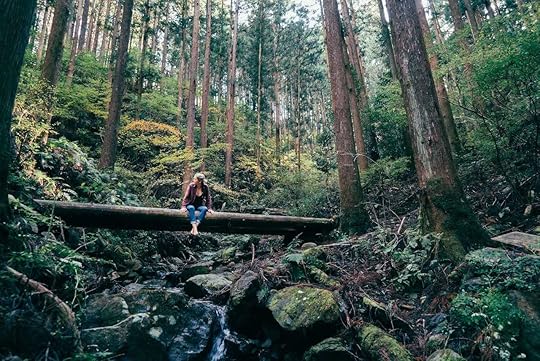
Photo: Mike Dewey
Over the course of the four days submerged in the forest, both Dewey and Hetrick find themselves more relaxed, sleeping better, and becoming more productive.
“Instead of sitting on my phone for an hour or two swiping through Instagram and Facebook, I’m like, hey, maybe I’ll go shoot something, maybe I’ll go look outside for sunset, maybe I’ll go talk to the guy outside, or have a cool interaction with a local,” Dewey says from a grass mat on the floor of his second night’s lodging. “It’s a reality check.”
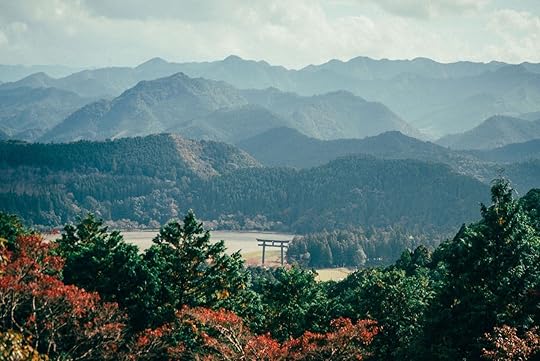
Photo: Mike Dewey

Photo: Mike Dewey
The trek becomes more for Dewey and Hetrick than a simple walk in the woods. Through interacting with their hosts in small forest villages and visiting the Shinto shrines left along the trail, they find a new appreciation for the wonders of the forest and the culture of the region.
Of course, it’s easy to feel the calm and relaxation of the forest when it’s temperate and overcast. Their newfound awe of wilderness gets a monstrous test on the final day, when the 10-mile, uphill trek to Nachi Taisha starts out with torrential downpour. Tired, wet, and ready for an onsen spa, they persevered. And miserable as the final day becomes, the lesson is not lost.
“Maybe the Japanese are onto something,” Dewey says in a final narration over misty trees and bright sunrises. “Five to ten hours alone at many times on the trail had us completely at ease, questioning what’s around every corner, and our own will power. Losing thought in the unknown mysteries of the forest instead of social media feeds.”

Photo: Mike Dewey
The concept of escaping the city into the forest to decompress isn’t exclusive to the Japanese, so if the documentary is inspiring to you, it’s something you can easily attempt on your own no matter where you are in the world (though the promise of ending the day with Japanese food certainly is a motivator). Check out the full 18-minute documentary to see how wrapping yourself in the misty, cool blanket of nature might help you live a healthier lifestyle, then get off your phone and try it for yourself. 

More like this: 7 of the coolest onsens in Japan that you have to visit
The post The Japanese practice of “forest bathing” can actually lower your blood pressure appeared first on Matador Network.

Is CBD legal? CBD oil laws

Cannabidiol, more commonly known as CBD, is seemingly everywhere. The market boomed in 2018, and it doesn’t appear to be slowing down anytime soon. The Brightfield Group, a cannabis industry company, estimates that the value of the CBD industry will reach $22 billion by 2022 — and that doesn’t include any products with tetrahydrocannabinol, or THC. Yet there’s still a major issue plaguing CBD use across every state: its legality.
To understand if it’s legal or not, you need to first know what CBD is. CBD is one of the 100-plus cannabinoids derived from the cannabis plant. It doesn’t get you high like THC, but studies have shown that CBD reduces social and general anxiety, reduces performance anxiety, and reduces pain. These benefits made CBD one of the hottest products in recent years, and new brands have popped up selling everything from CBD-infused food to CBD pens and oils to CBD beers (though some states like New York are cracking down on where these CBD-infused edibles can be sold). It’s especially become popular for easing travel stress.
Thanks to its ubiquity, plenty of advocates and publications tout that CBD is “legal in all 50 US states.” Unfortunately, just like the laws about flying and traveling with CBD, it’s not so cut and dry.
Current federal CBD and CBD oil laws in 2019

Photo: Felix Broennimann/Shutterstock
The 2018 Farm Bill legalized a lot of CBD, but not all of it. Most importantly, it redefined what hemp and hemp products are by federal law. Hemp is legally defined as a cannabis plant or part of the cannabis plant that has a THC concentration “of not more than 0.3 percent on a dry weight basis.” That’s not enough to get you high, and CBD with less than 0.3 percent THC is also not strong enough to make you fail a drug test.
If the THC concentration is higher, however, then it’s classified as a Schedule I drug under the Controlled Substances Act. That means the US Drug Enforcement Administration believes it has “no currently accepted medical use and a high potential for abuse.”
Other than the 0.3 percent THC rule, there’s one other major stipulation as to whether a certain CBD product is federally legal: It has to be derived from hemp grown by a licensed business that’s approved by the federal and state government. That means much of the current crop of CBD companies — including those made in the 10 states with legal recreational cannabis — aren’t federally legal.
CBD and CBD oil legality in all 50 states
Thanks to the 2018 Farm Bill, hemp-derived CBD is federally allowed in every state, and licensed companies are allowed to commercially distribute CBD products across state lines. The bill allows states to create more strict laws than the federal legislation, however, meaning states can ban CBD specifically.
These are the specific laws for each state.
Alabama: Legal under 2018 Farm Bill rules.
Alaska: Both hemp- and marijuana-derived CBD produced in the state is legal under the state’s recreational cannabis laws. Any CBD made from marijuana or made by a federally unlicensed grower is federally illegal and can’t be shipped across state lines.
Arizona: Legal under 2018 Farm Bill rules.
Arkansas: Legal under 2018 Farm Bill rules.
California: Both hemp- and marijuana-derived CBD produced in the state is legal under the state’s recreational cannabis laws. Any CBD made from marijuana or made by a federally unlicensed grower is federally illegal and can’t be shipped across state lines.
Colorado: Both hemp- and marijuana-derived CBD produced in the state is legal under the state’s recreational cannabis laws. Any CBD made from marijuana or made by a federally unlicensed grower is federally illegal and can’t be shipped across state lines.
Connecticut: Legal under 2018 Farm Bill rules.
Delaware: Legal under 2018 Farm Bill rules.
Florida: Legal under 2018 Farm Bill rules.
Georgia: Legal under 2018 Farm Bill rules.
Hawaii: Legal under 2018 Farm Bill rules.
Idaho: Only CBD products with 0.0 percent THC.
Illinois: Legal under 2018 Farm Bill rules.
Indiana: Legal under 2018 Farm Bill rules.
Iowa: Legal under 2018 Farm Bill rules.
Kansas: Legal under 2018 Farm Bill rules.
Kentucky: Legal under 2018 Farm Bill rules.
Louisiana: Legal under 2018 Farm Bill rules.
Maine: Both hemp- and marijuana-derived CBD produced in the state is legal under the state’s recreational cannabis laws. Any CBD made from marijuana or made by a federally unlicensed grower is federally illegal and can’t be shipped across state lines.
Maryland: Legal under 2018 Farm Bill rules.
Massachusetts: Both hemp- and marijuana-derived CBD produced in the state is legal under the state’s recreational cannabis laws. Any CBD made from marijuana or made by a federally unlicensed grower is federally illegal and can’t be shipped across state lines.
Michigan: Both hemp- and marijuana-derived CBD produced in the state is legal under the state’s recreational cannabis laws. Any CBD made from marijuana or made by a federally unlicensed grower is federally illegal and can’t be shipped across state lines.
Minnesota: Legal under 2018 Farm Bill rules.
Mississippi: Legal under 2018 Farm Bill rules.
Missouri: Legal under 2018 Farm Bill rules.
Montana: Legal under 2018 Farm Bill rules.
Nebraska: All CBD is illegal and anyone selling CBD can be prosecuted.
Nevada: Both hemp- and marijuana-derived CBD produced in the state is legal under the state’s recreational cannabis laws. Any CBD made from marijuana or made by a federally unlicensed grower is federally illegal and can’t be shipped across state lines.
New Hampshire: Legal under 2018 Farm Bill rules.
New Jersey: Legal under 2018 Farm Bill rules.
New Mexico: Legal under 2018 Farm Bill rules.
New York: Legal under 2018 Farm Bill rules.
North Carolina: Legal under 2018 Farm Bill rules.
North Dakota: Legal under 2018 Farm Bill rules.
Ohio: Legal under 2018 Farm Bill rules.
Oklahoma: Legal under 2018 Farm Bill rules.
Oregon: Both hemp- and marijuana-derived CBD produced in the state is legal under the state’s recreational cannabis laws. Any CBD made from marijuana or made by a federally unlicensed grower is federally illegal and can’t be shipped across state lines.
Pennsylvania: Legal under 2018 Farm Bill rules.
Rhode Island: Legal under 2018 Farm Bill rules.
South Carolina: Legal under 2018 Farm Bill rules.
South Dakota: All CBD is illegal and anyone selling CBD can be prosecuted.
Tennessee: Legal under 2018 Farm Bill rules.
Texas: Legal under 2018 Farm Bill rules.
Utah: Legal under 2018 Farm Bill rules.
Vermont: Both hemp- and marijuana-derived CBD produced in the state is legal under the state’s recreational cannabis laws. Any CBD made from marijuana or made by a federally unlicensed grower is federally illegal and can’t be shipped across state lines.
Virginia: Legal under 2018 Farm Bill rules.
Washington: Both hemp- and marijuana-derived CBD produced in the state is legal under the state’s recreational cannabis laws. Any CBD made from marijuana or made by a federally unlicensed grower is federally illegal and can’t be shipped across state lines.
West Virginia: Legal under 2018 Farm Bill rules.
Wisconsin: Legal under 2018 Farm Bill rules.
Wyoming: Legal under 2018 Farm Bill rules. 

More like this: Can you take CBD on a plane? It’s complicated.
The post No, CBD is not legal in all 50 states appeared first on Matador Network.

Matador Network's Blog
- Matador Network's profile
- 6 followers



